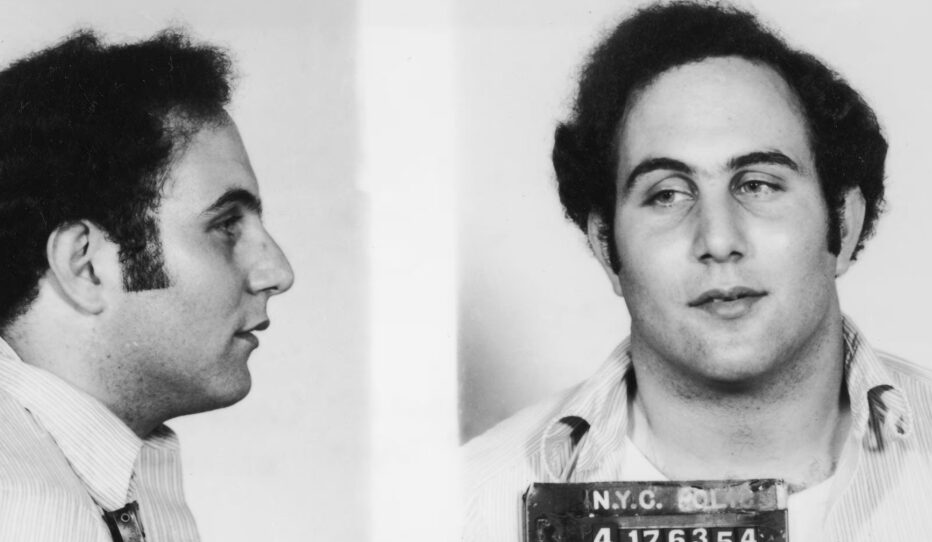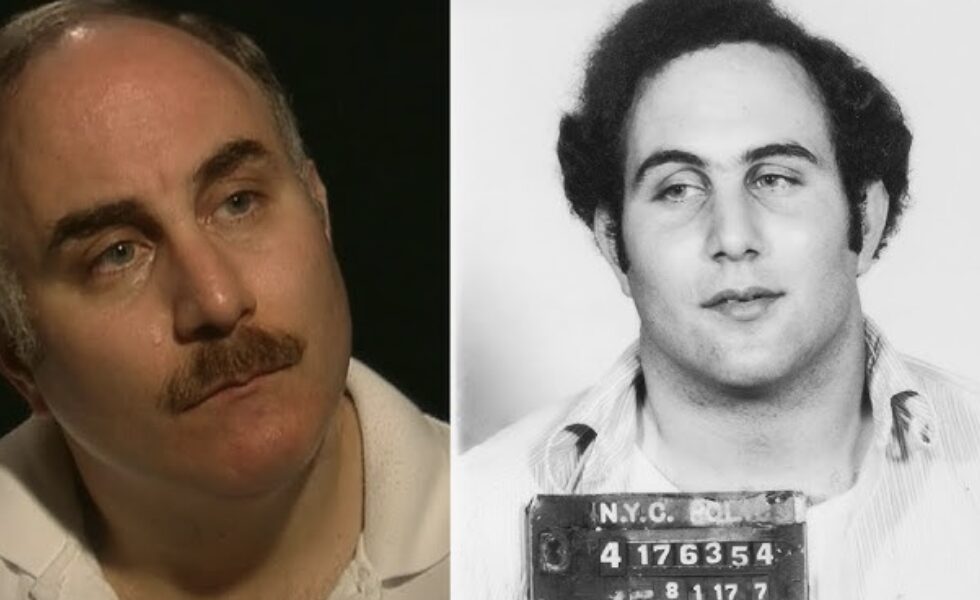Physical Address
304 North Cardinal St.
Dorchester Center, MA 02124
Physical Address
304 North Cardinal St.
Dorchester Center, MA 02124

A mysterious killer once walked through city streets at night, leaving behind a trail of fear and a disturbing message. The shadowy murderer who terrorized residents became notorious not just for the crimes, but for repeatedly telling investigators and witnesses “I love my work” during questioning and crime scenes. This chilling phrase revealed the twisted mindset of someone who found pleasure in causing terror.
The case gripped the public as police worked to understand the killer’s motives and patterns. Citizens stayed indoors after dark while investigators searched for clues in the misty streets. The murderer’s cold enthusiasm for violence made the crimes even more unsettling for a community already living in fear.
This case shows how some criminals view their deadly actions as a form of twisted profession. The investigation reveals the psychological profile of a killer who took pride in spreading fear. The story explores how law enforcement tracked down this dangerous individual and how the community recovered from months of terror.
The killer’s emergence marked a turning point in urban violence, with nighttime attacks becoming his signature method. His psychological profile reveals a disturbing fascination with the act of killing itself, while his victim selection followed specific patterns that kept investigators guessing.

The Shadowy Murderer first appeared during a period when cities across America faced rising crime rates. His crimes began with seemingly random attacks under cover of darkness.
Night provided the perfect shield for his activities. The killer used shadows and empty streets to approach victims without detection. This tactical advantage allowed him to strike quickly and disappear.
Police records show his first confirmed attack occurred on a moonless evening in late spring. The victim was found at dawn with evidence of a prolonged assault. Witnesses reported hearing nothing unusual during the night hours.
The killer’s timing was deliberate and calculated. He studied patrol routes and identified areas with minimal lighting. Most attacks happened between midnight and 4 AM when foot traffic was lowest.
His emergence coincided with urban expansion that created more isolated areas. Construction zones and abandoned buildings became hunting grounds. The mystery surrounding his identity deepened as months passed without arrests.
The phrase “I love my work” revealed the killer’s disturbing relationship with violence. This statement appeared in letters sent to local newspapers after each attack.
His obsession went beyond simple criminal behavior. The killer viewed murder as an art form requiring skill and planning. Each crime scene showed increasing sophistication in execution.

Psychological experts noted his need for recognition and control. The letters contained detailed descriptions of his methods and emotional state during attacks. He expressed genuine pleasure in causing fear throughout the community.
The killer’s correspondence revealed a structured mindset. He kept detailed records of victims and crime scenes. Some letters included sketches and timelines showing his preparation process.
His obsession with perfection led to longer gaps between attacks. He spent weeks studying potential victims and escape routes. The motives for his crimes remained unclear to investigators throughout the investigation.
The killer’s victims shared specific characteristics that became apparent over time. Age, location, and lifestyle factors played crucial roles in his selection process.
Most victims were between 25 and 45 years old. They lived alone or had predictable evening routines. The killer avoided targets with security systems or guard dogs.
Common Victim Traits:
Geographic analysis showed a clear pattern. Attacks clustered around three specific neighborhoods with similar demographics. Each area had limited street lighting and few 24-hour businesses.
The killer studied his targets for weeks before striking. Neighbors later reported seeing the same suspicious figure multiple times. He posed as a delivery worker or maintenance person to gather information.
His selection process became more refined over time. Later victims had increasingly similar profiles and living situations. This pattern eventually helped investigators narrow their search areas.
The phrase “I love my work” became a defining element of the Shadowy Murderer case, representing the killer’s disturbing psychological profile and leaving lasting effects on both law enforcement and the terrified public. This statement revealed crucial insights into the perpetrator’s mindset while fundamentally changing how the community perceived the ongoing threat.
The declaration “I love my work” provided investigators with a rare glimpse into the murderer’s psychological state. Criminal profilers noted that such statements typically indicate a lack of remorse and suggest the perpetrator views killing as a profession rather than a crime.
This particular phrasing demonstrated the killer’s detachment from normal human emotions. The word “work” implies routine and purpose, suggesting the murders were methodical rather than crimes of passion.
Forensic psychologists analyzing the statement identified several key behavioral indicators:
The phrase also revealed the killer’s desire for recognition. By framing murders as “work,” the perpetrator elevated their actions to a skilled craft, demanding acknowledgment of their perceived expertise.
Many notorious killers have made chilling statements that reveal their twisted mindset. This particular quote joined the ranks of history’s most disturbing criminal declarations.
The slogan fundamentally altered how residents viewed their safety and the ongoing investigation. Citizens reported increased anxiety levels after learning about the killer’s casual attitude toward murder.
Local bookstores noted increased sales of mystery novels and true crime books as people sought to understand criminal psychology. Many residents began studying criminal behavior patterns to better protect themselves.
The phrase created a psychological warfare effect within the community. Parents kept children indoors after school, and neighborhood watch groups formed rapidly across affected areas.
Public forums and town halls became dominated by discussions of the killer’s mindset. Community leaders struggled to address residents’ fears while maintaining order and preventing panic.
The statement’s casual tone particularly disturbed citizens because it suggested the murders would continue indefinitely. Unlike crimes of passion, this indicated a long-term threat that could escalate without warning.
Law enforcement officials initially withheld the statement from public release, fearing it would cause widespread panic. However, media outlets eventually obtained the information through undisclosed sources.
Police departments consulted with FBI behavioral analysts to develop response strategies. The statement helped narrow suspect profiles by eliminating crimes of passion and focusing on organized killers.
Detective units implemented new communication protocols to prevent further leaks. They recognized that the killer’s words were being used as psychological weapons against the community.
Media coverage intensified dramatically after the phrase became public knowledge. Newspapers ran daily updates, and radio stations provided hourly safety reminders to listeners.
The police response included:
| Strategy | Implementation |
|---|---|
| Increased patrols | 24-hour coverage in high-risk areas |
| Public warnings | Daily safety briefings |
| Profile development | Psychological analysis teams |
News organizations debated whether continued coverage amplified the killer’s message or served legitimate public interest in staying informed about the ongoing threat.
The killer’s reign of terror transformed the city into a place of constant dread, where residents locked their doors and feared the darkness. Night became the enemy’s ally, while investigators struggled against both the murderer’s cunning and the physical barriers that obscured their pursuit.
The city lived in constant fear as the shadowy murderer struck without warning. Residents changed their daily routines completely.
People slept with guns nearby and kept their homes locked tight. Los Angeles residents in 1984 experienced similar terror when the Night Stalker prowled the streets.
The psychological impact spread beyond direct victims. Neighbors watched each other with suspicion. Every stranger became a potential threat.
Common Fear Responses:
The killer’s boastful attitude made things worse. His proclaimed love for his work showed residents they faced someone who enjoyed causing pain.
This created a different kind of fear than typical crimes. The city wasn’t just dealing with violence but with someone who celebrated it.
Police increased patrols throughout affected neighborhoods. Officers worked longer shifts to maintain visibility during peak crime hours.
The department created special task forces. These teams focused only on catching the murderer. They studied crime patterns and interviewed witnesses.
New Orleans faced similar challenges with the Axeman killer during the 1910s. That case showed how myths and legends could complicate investigations.
Police Response Measures:
Community groups organized their own protection efforts. They shared information about suspicious activities. Some areas hired private security guards.
Local businesses changed their hours. Many closed earlier to avoid the dangerous night hours when attacks typically occurred.
Darkness gave the killer major advantages. Most attacks happened between midnight and dawn when visibility was poor.
The murderer used night as cover for approaching victims. Witnesses could barely see his face or clothing. This made creating accurate descriptions nearly impossible.
Mist made conditions even worse for investigators. It covered the killer’s movements and confused witnesses about directions and distances.
Environmental Challenges:
Crime scene processing became much harder in these conditions. Officers needed special lighting equipment. They often had to wait for daylight to search thoroughly.
The killer clearly planned attacks around these conditions. He knew when fog was forecast. Weather reports became part of the investigation strategy.
Police started timing their patrols differently. They focused resources during the darkest hours when attacks were most likely to happen.
The killer left behind distinct patterns across multiple locations in the city, creating a complex mystery that investigators struggled to decode. Each attack site revealed specific clues about the murderer’s methods and timeline.
The attacks occurred primarily in abandoned areas and secluded locations throughout the city. Empty warehouses, vacant lots, and isolated buildings became the killer’s preferred hunting grounds.
Common location features:
Investigators found similar physical evidence at each scene. Torn fabric pieces appeared near entry points. Footprint patterns showed the same boot size and tread design.
The killer consistently left behind handwritten notes with the phrase “I love my work” scrawled in red ink. These messages appeared on walls, doors, or nearby surfaces.
Crime scene reconstruction experts analyzed the positioning of evidence to understand the sequence of events. The methodical placement of clues suggested careful planning rather than random violence.
The murderer employed consistent techniques across all attacks. A sharp blade served as the primary weapon, based on wound patterns and forensic analysis.
Attack methodology:
The killer demonstrated knowledge of human anatomy. Wound placement indicated understanding of vital organs and major blood vessels. This expertise suggested possible medical or military training.
Rope marks found at scenes showed identical knot patterns. The binding technique required specific skills not commonly known to the general public.
No fingerprints ever appeared on weapons or personal items. The murderer wore gloves and took precautions to avoid leaving DNA evidence.
The first attack occurred on March 15th in the warehouse district. Three weeks passed before the second incident near the old textile factory.
Timeline pattern:
The time gaps between attacks shortened progressively. Initial three-week intervals decreased to two weeks, then to just over three weeks for the final known case.
All attacks happened between 9 PM and midnight on weekdays. The killer avoided weekends and holidays when more people might be present in the area.
Weather patterns showed no correlation to attack timing. Rain, clear skies, or cold temperatures did not deter the murderer’s activities.
The chronological analysis revealed increasing confidence in the killer’s approach. Later crime scenes showed more elaborate staging and longer messages left behind.
The investigation mobilized multiple law enforcement agencies using coordinated search strategies and advanced tracking methods. News outlets provided extensive coverage that both helped and hindered the investigation while the public contributed thousands of tips.
Police departments launched one of the largest coordinated manhunts in the city’s history. Multiple agencies worked together to track the killer’s movements and patterns.
Key Investigation Methods:
The Christopher Dorner manhunt became the largest in Southern California history. It showed how modern police operations handle dangerous suspects.
Officers established checkpoints throughout the city. They increased patrols in high-risk areas. Special units received extra training for dangerous encounters.
Television news and newspapers covered every development in the case. The killer’s chilling phrase “I love my work” became a headline across the nation.
Local news stations provided 24-hour coverage. They broadcast suspect descriptions and safety warnings to residents. Press conferences updated the public on investigation progress.
The Son of Sam case sparked intense police coverage that gripped New York City. Similar media attention surrounded this investigation.
Media Impact:
Books about famous manhunts later documented how media coverage affected these cases. Publishers released true crime accounts that analyzed the investigation methods.
Citizens formed neighborhood watch groups and safety patrols. Residents changed their daily routines to avoid dangerous areas during peak crime hours.
The police tip hotline received over 10,000 calls during the first month. Community members reported suspicious activities and potential sightings throughout the city.
Public Response Measures:
Local businesses offered rewards for information leading to an arrest. The total reward money reached $100,000 from various sources.
Community leaders organized safety meetings in churches and community centers. They taught residents how to recognize warning signs and report them properly to authorities.
The investigation reached its turning point when forensic evidence linked the suspect to multiple crime scenes, while witness testimony provided crucial identification details. Following a swift trial, the convicted murderer received a life sentence without parole and was transferred to maximum security facilities.
DNA evidence collected from the final crime scene matched samples found at three previous murder locations. Police had preserved biological material despite the challenging conditions at each scene.
A witness came forward after seeing surveillance footage on local news broadcasts. She identified the suspect leaving the area where the fourth victim was discovered.
Key Evidence That Led to Arrest:
The suspect was arrested at his apartment without incident. Police found journals containing detailed plans for future attacks. The writings included the phrase “I love my work” repeated multiple times throughout different entries.
The prosecution presented overwhelming physical evidence during the three-week trial. DNA results showed a 99.7% probability match between the defendant and crime scene samples.
Expert witnesses testified about the killer’s psychological profile. Court psychiatrists determined the defendant was mentally competent to stand trial despite his disturbing behavior patterns.
The defense argued for an insanity plea but failed to convince the jury. Testimony from surviving victims provided powerful emotional impact during the proceedings.
Trial Outcome:
The judge called the crimes “among the most heinous acts of violence this court has witnessed.”
The convicted murderer was transferred to a maximum security facility immediately after sentencing. He remains in solitary confinement for 23 hours daily due to threats from other inmates.
Prison officials keep him under constant surveillance. Guards check his cell every 15 minutes as a suicide prevention measure. His meals are delivered through a slot in the steel door.
The key to his cell requires two guards to operate as an additional security protocol. No visits from family members have been requested or approved since his imprisonment began.
He spends his time writing in journals, though prison staff monitor all written materials. Recent psychological evaluations show no signs of remorse for his actions.
The Axeman of New Orleans left a lasting mark on American culture that extends far beyond his brief reign of terror. His story became deeply embedded in jazz history, true crime literature, and popular media, transforming from local nightmare into national fascination.
The Axeman case helped establish many conventions that define modern true crime writing. Books about the killer introduced the concept of exploring unsolved cases through multiple theories and suspect profiles.
Authors began using the Axeman’s story as a template for examining serial killers who left behind cryptic communications. His famous jazz letter became a prototype for studying criminal psychology through written evidence.
The case demonstrated how mystery writers could blend historical facts with speculative analysis. This approach influenced generations of true crime authors who tackle cold cases.
True crime publishers recognized the commercial appeal of combining music culture with murder. The Axeman proved that cases involving cultural elements like jazz could reach broader audiences than typical police procedurals.
Television shows like American Horror Story: Coven featured the Axeman as a central character, introducing his story to new generations. The show portrayed him as a jazz-obsessed killer who continued terrorizing people beyond death.
Multiple documentaries have examined the case, focusing on the cultural panic his letter created. These productions emphasize how an entire city changed its behavior based on one killer’s demands.
Books specifically about the Axeman analyze his connection to New Orleans’ immigrant communities. Authors explore how anti-Italian sentiment may have influenced both the crimes and the investigation.
Podcasts frequently revisit the case, particularly focusing on the jazz angle that makes it unique among serial killer stories.
Jazz musicians have referenced the Axeman in songs and performances, turning his story into part of New Orleans musical folklore. The connection between jazz and survival became a recurring theme in local culture.
Tourism companies now include jazz age sites linked to the infamous killer on historical tours. Visitors can see locations where attacks occurred and where people played jazz to protect themselves.
The Axeman’s cultural impact on New Orleans embedded his story into the city’s identity alongside other famous local legends. His case represents how fear and music intersected during a crucial period in American history.
Halloween attractions and ghost tours regularly feature the Axeman story. His mystery continues attracting people interested in unsolved crimes and supernatural folklore.